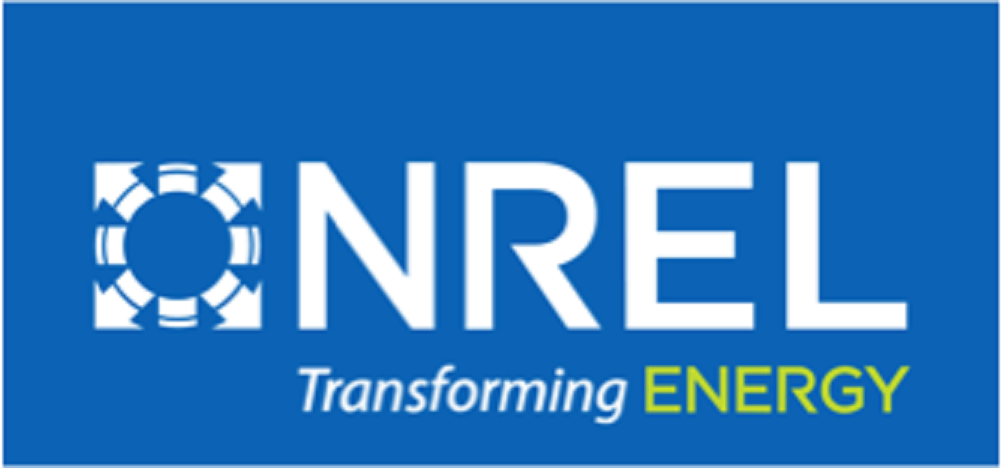NREL: REopt Is Not Lite Anymore
Researchers at the National Renewable Energy Laboratory (NREL) are bullish on energy decision science.
As clean energy technology costs continue to decrease and with a renewed focus on decarbonization goals, commercially available options are quickly multiplying for on-site renewable energy, battery storage, electric vehicle charging, and other grid-edge technologies that can enhance energy efficiency and resiliency and reduce a building’s carbon footprint. With so many choices, identifying the optimal system size and combination of technologies—at the lowest possible life cycle cost for your particular site and goals—requires some fancy footwork in terms of modeling.
The REopt Tool Three Ways
REopt offers access for different types of users through the web interface, application programming interface (API), or open-source code.
Blue circular icon of a laptop computer with cursor on the screenWeb tool: Use the simple, user-friendly, web-based REopt interface for single-site analysis.
Yellow circular icon showing gearsAPI: Get programmatic access to run multisite analyses or embed REopt in custom applications.
Red circular icon showing a hyperlink symbolOpen Source: Download the REopt source code to add custom features and capabilities.
REopt®, a free, techno-economic decision support model, does the heavy lifting to help users optimize energy systems for buildings, campuses, communities, and microgrids. It identifies optimal photovoltaic (PV), wind, combined heat and power (CHP), geothermal heat pump (GHP), and energy storage system sizes and dispatch strategies to minimize the life cycle cost of energy at a specific site. The tool also recommends least-cost system configurations to sustain critical loads during grid outages or meet clean energy goals.
REopt is used to conduct energy project feasibility analysis for federal agencies, military installations, businesses, campuses, and communities around the world. Over the past 10 years, REopt has been used to evaluate renewable energy opportunities at more than 10,000 sites, and analyses have led to more than 260 MW of renewable energy development.
Once called REopt Lite®, the REopt tool is dropping the “Lite” in 2022 to better reflect its true status as a heavy-hitting and comprehensive optimization tool.
Evolution From a Screening Spreadsheet to a Comprehensive Online Optimization Tool
Version 1.0 of REopt was known as REO (Renewable Energy Optimization)—a spreadsheet that served as a screening-level tool to identify potential for individual renewable energy projects like PV, water, or wind.
By 2012, NREL’s Modeling and Analysis team had transformed REO into REopt, a mathematical optimization model used internally at the laboratory. REopt uses mixed-integer linear programming techniques to identify the lowest life cycle cost for a given combination of renewable energy technologies and site-specific constraints.
In 2017, NREL released a beta version of REopt Lite as a publicly available web version of the REopt model. REopt Lite allowed anyone to run their own site-specific, optimized, and integrated PV and storage analysis in order to inform project development and deployment.
REopt’s Expanding Range of Online Capabilities
Since its online debut, capabilities have been continually added to the tool, making REopt Lite less and less …“Lite.” Users can perform solar-plus-storage and resiliency analysis and access the model via an application programming interface for research collaboration and broader market impact. The web tool has gone open source, with the code and tools required to build REopt Lite made available to the public on the GitHub repositories. Modeling capabilities including enhanced resilience analysis; wind optimization and custom utility rate tariffs; and a critical load profile builder followed. In 2021, users could also weigh their options for combined heat and power systems as well as geothermal heat pumps.
To better reflect its wide range of capabilities, the online version of REopt has now dropped the “Lite” from its name. The evolution of REopt would not have been possible without sustained support from the U.S. Department of Energy’s (DOE’s) Federal Energy Management Program, REopt’s main funder, and other DOE offices like the Advanced Manufacturing Office, Solar Energy Technologies Office, Geothermal Technologies Office, and Weatherization and Intergovernmental Programs Office.
REopt Is Not Lite Anymore—What Is Next?
NREL’s REopt development team continues to work with partners to explore new technologies and challenges that sites, communities, and utilities are facing—and to build new capabilities to address those challenges. These include modeling and optimizing for greenhouse gas emissions and decarbonization goals (another new feature released in January 2022), electric vehicle charging systems, and modeled predictive controls. As always, entities can partner with the REopt team to explore solutions to the unique energy challenges they are facing.
REopt is also leveraging the core capabilities of proven modeling tools, including NREL’s PVWatts calculator for solar generation, and the URBANOpt platform as a means of connecting REopt’s behind-the-meter optimization with community-scale analyses. The REopt team is also working with OCHRE—the Object-Oriented Controllable High-Resolution Residential Energy Model—for evaluating residential flexible load and solar-plus-storage opportunities.
And the open-source REopt model is enabling research at universities that partner with NREL. For example, Kate Anderson has explored resilience, technology deployment, and energy justice extensions to the model as part of her doctoral studies at the Colorado School of Mines’ Advanced Energy Systems graduate program.
Emma Elgqvist, who leads REopt development at NREL, believes deployment-focused development helps make REopt impactful beyond its capacity for analysis. “We work with partners to address their more immediate energy challenges, and then, utilizing funding from the Department of Energy, the new capabilities are made publicly available, which multiplies the impact. The tool is connected with partners on the ground, and we’re seeking to answer questions that are being asked right now—we’re working in real time.”

